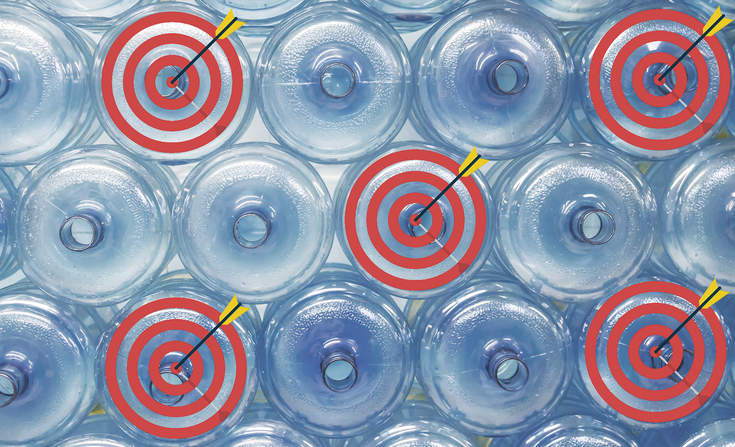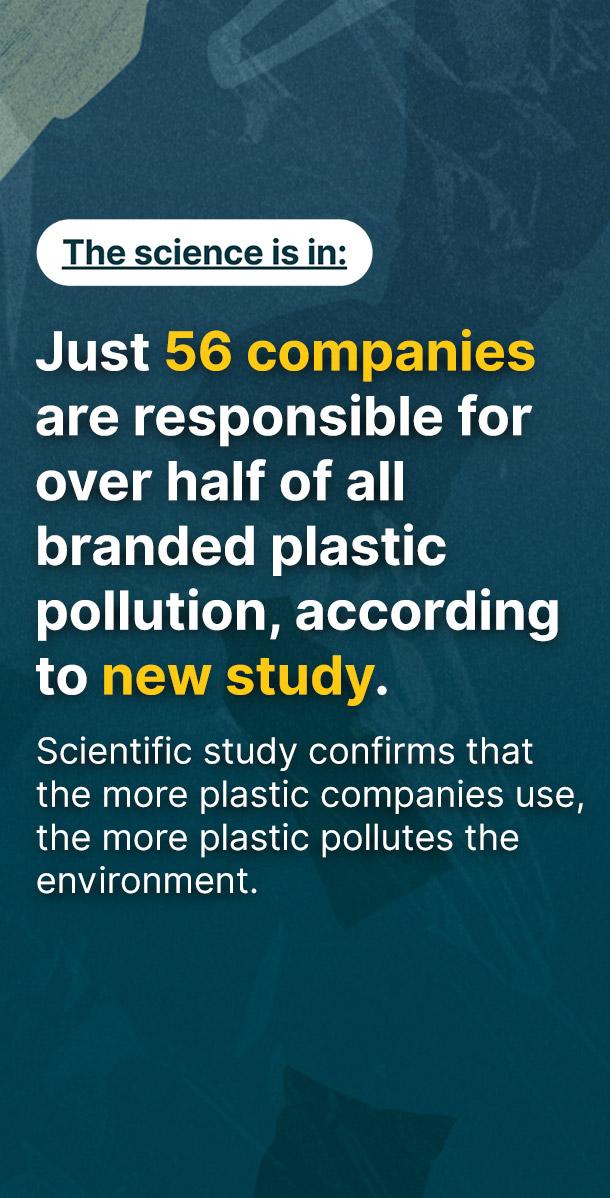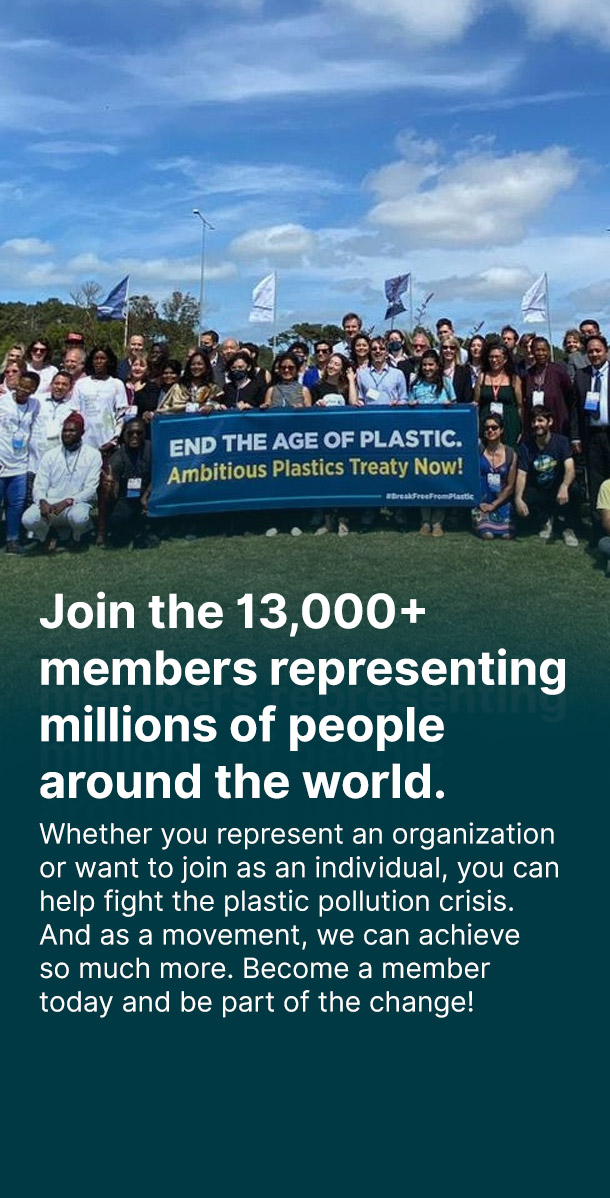This year has seen the eruption of disparate skirmishes into a full-fledged war to end plastic pollution, primarily the waste ending up in waterways and, eventually, oceans. The warriors include local and international activist groups, local and national governments and some of the world’s biggest brands and their supply-chain partners.
There’s been no single, catalytic moment. Rather, the momentum seems largely self-generated, the result of a confluence of events and long-term trends, including growing concern over plastics in marine environments, especially oceans, and about its impacts on both sea life and land life. Increased awareness of circular economy principles, and the growing potential of closed-loop materials flows are contributing factors, along with new policies, primarily in Europe and Asia, that discourage waste and encourage recycling. Public awareness of the problems is rising, particularly among younger consumers. And the leadership of companies, cities and other institutions in setting goals and creating bold and innovative policies and business models is showing that change, including radical change, is possible.
The year already has seen a spate of corporate and institutional commitments. All indications are that many more are to come.
Over the past few months, I’ve been piecing together this state of affairs: where we are; how we got here; and where we might be headed. It’s a complex story, long in the telling, involving a wide cast of characters — working variously in concert and in opposition — and large-scale commitments to end plastic pollution that sometimes lack necessary solutions, at least for now, to achieve their ambitious goals.
What’s clear from more than a dozen interviews I conducted is that this is a dynamic and evolving saga. And for all the activity by companies, cities and nations, global action to stem the tide, literally, of plastic pollution is just getting underway.
First, some history
As I said, and as nearly everyone in the sustainability world knows, the environmental and public health problems associated with plastics have been discussed and debated for decades.
Plastics for packaging began to gain popularity in the 1960s, growing in lockstep with the rise in fast food as well as the emergence of the supermarket and the explosion of convenience foods across a range of categories. Perhaps paradoxically, plastic’s rise also stems from efforts to use it to save energy by lightweighting everything from cans to cars, and the increased capability to improve the shelf life and safety of a wide range of products.
By the end of the 1960s, plastic’s central place in society had been well burnished, as noted in theclassic encounter between Dustin Hoffman’s character Benjamin Braddock and Mr. McGuire (he had no first name), played by Walter Brooke, in the 1967 movie "The Graduate." "There’s a great future in plastics," Mr. McGuire told young Ben. It goes without saying that McGuire (via the movie’s screenwriters, Calder Willingham and Buck Henry) was prescient.
Plastic became popular for consumer packaged goods in the 1970s due to its low cost and ease of mass production. It was also lighter than glass and metal packaging, reducing shipping costs. By the end of the '70s, synthetic plastics would become the go-to packaging material for most foods and personal care products.
Plastic bottles began to bubble up in the 1950s with the introduction of high-density polyethylene, commonly used today for milk jugs. PepsiCo introduced the industry's first two-liter plastic bottle in 1970, but it would be PET bottles — short for polyethylene terephthalate — that would win the day. Coca-Cola, late to the switch from glass to plastic, introduced the first PET soda bottle in 1978.
The plastic shopping bag entered the scene in 1979, spurred by polymer companies such as Mobil Chemical. By the mid-1980s, three-fourths of all supermarkets offered plastic bags at checkout. "Paper or plastic?" became as common a question as "Cash or credit?"
Meanwhile, the fast-food industry was gobbling up mountains of plastic for packaging, including polystyrene foam clamshell containers for burgers, fried chicken and other treats. McDonald’s, prodded by activists, abandoned foam hamburger containers in 1990 in favor of paper and cardboard. (Previously, McDonald’s had dismissed the problems associated with polystyrene, describing it as "basically air" that was benign when discarded into landfills because it "aerated the soil," according to Heather Rogers in her book, "Gone Tomorrow: The Hidden Life of Garbage.")
Despite its popularity and mushrooming growth, the problems with plastics were identified early on. For the public, the issue was primarily litter, an unpleasant outcome of the burgeoning disposable society. Sensing public pushback to the growth of disposable packaging, the packaging industry and several large brands formed Keep America Beautiful, which launched a massive media campaign to end littering. It seemed like a public service, but it effectively shifted the burden from the producers of plastics and the brands that used them to consumers — and especially to "litterbugs," social outcasts who discarded their trash in inappropriate public places.
For scientists, the problems were altogether different. The environmental and public health problems associated with plastics began to become known not long after plastics hit the mainstream. For example, in New Zealand in 1960, stranded seabirds were found to have ingested plastics. In 1966, dozens of dead albatross chicks in the Midway Islands were found to have plastics in their stomachs. Over the years, a series of other critters, from plankton to puffins, were seen as adversely affected by plastic pollution, from the South Pacific to the North Sea.
By the first Earth Day, in 1970, there was widespread awareness of the toxicity of plastics on humans. In 1969, Johns Hopkins University toxicologists found that toxics in plastics were leaching from packaging into human tissues. In 1972, the Washington Post reported that phthalates — substances added to plastics to increase their flexibility, transparency and durability — had been found in blood samples from people who had been exposed only through everyday contact with plastics. The Post noted: "Humans are just a little plastic now." Few independent surveys gauge consumers’ concerns about the toxic impacts of plastics, but there have been enough scares and controversies — Bisphenol-A! Phthalates! Styrene! — to rile up any health-concerned citizen. The Internet has no shortage of websites and mommy blogs on how to live a plastic-free life.
All of these concerns clashed with the increased appreciation of plastic’s benefits for a number of applications, such as in health care, where plastics revolutionized such things as collecting blood and keeping surgical gloves, syringes, insulin pens, IV tubes and catheters sterile. In the grocery aisles, plastics reduced spoilage and shipping weight while keeping food fresh and safe.
Still, the mountain of waste kept growing. The emergence of widespread neighborhood recycling in the 1990s laid bare the limits of plastic’s environmental benefits. Plastics’ light weight, one of its chief benefits, also made it less cost-effective to collect and transport for recycling compared to, say, aluminum or some types of glass. The relatively low cost of oil and natural gas, the basic feedstocks of most plastics, made virgin material cheaper than recycled. To this day, only about 9 percent of all the plastics produced worldwide is recycled, according to a 2017 study.
Sea change
For all the decades-long concern about plastics’ impact on the environment, it’s been the rise of plastics in rivers, lakes and oceans that has spurred the most recent wave of concern and action.
Again, the scientific awareness goes back decades, beginning in the 1970s, when the influential magazine Science reported that large numbers of plastic pellets were found in the North Atlantic. Since then, research on the impact of plastic pollution on the marine environment has grown. More recently, researchers at the State University of New York estimated that Lake Ontario contains 1.1 million particles of plastics per square kilometer. At least 20 percent of the microplastics pollution in Great Lakes waters are microbeads, plastic particles less than a millimeter in diameter used in scores of household and personal care products.
As concern over the impact of microbeads grew, policymakers stepped in. President Barack Obama signed the Microbead-Free Waters Act in 2015, and other countries, including many in the European Union, have banned microplastics or are considering doing so.
But it was in Asia that the plastic pollution problem hit critical mass. A 2017 study estimated that about 90 percent of the plastic pollution in the world’s oceans originates from just 10 rivers, eight in Asia and two in Africa.
Perhaps more dramatically, a 2016 report (PDF) from the Ellen MacArthur Foundation concluded: "In a business-as-usual scenario, the ocean is expected to contain one ton of plastic for every three tons of fish by 2025, and by 2050, more plastics than fish (by weight)."
More plastic than fish! If ever there was a meme to articulate the plastics problem, this was it. It was simple, clear and visual. It didn’t hurt that a 2015 YouTube video of a hapless sea turtle with a plastic straw stuck in its nostril has received nearly 33 million views, an in-your-face testament of plastic’s detrimental impacts on marine environments.
"Almost all of the plastic we've ever produced is still here with us," said John Hocevar, Oceans Campaign Director for Greenpeace USA. "Over the past few years, accumulation of plastic has reached the point where it's incredibly visible. For people that were paying attention, this was a problem that has been coming for a long time, but it's only become really visible to the average person much more recently. I think, ultimately, people are feeling frustrated that it's so difficult for them to keep plastic out of their lives. They want better options, they want better choices that are more sustainable for themselves and for the planet."
By last year, the United Nations acknowledged that we have a "plastics crisis," and nearly 200 countries adopted a (non-binding) resolution calling for an end to plastic entering the sea.
It was time to act.
The last straw?
In 2018, action against plastics caught a wave. Perhaps thanks to that infamous turtle, it began with straws.
It’s not that straws are the world’s biggest plastic waste problem. Far from it. According to the Ocean Conservancy, they rank just ninth among the top 10 sources of marine plastic waste. Cigarettes and plastic bags, by contrast, represent 21 percent and 11 percent of marine waste, respectively. Of the 8 million tons of plastic that flow into the ocean every year, straws comprise just 0.025 percent.
Still, NGO executive Susan Ruffo isn’t surprised that straws became the poster child for plastic pollution. "It’s such a tangible item that we all run up in our daily lives so it certainly makes sense that it becomes that it becomes kind of a focal point," said Ruffo, managing director for nternational initiatives at the Ocean Conservancy, which has run a "Skip the Straw" campaign for about a half-dozen years. "We think it’s obviously important to reduce what we can.
"But it’s a first step. We have to skip straws but also think about these larger issues that we need to direct waste management, which is a much harder thing to do for the public."
"Straws is a great place to start," Greenpeace’s Hocevar said, "but it needs to be a comprehensive approach. It can't just be in places where people are making the most noise. It should be a global approach. And ultimately, we want to see people really quickly take action on the least-recyclable, most-toxic types of plastic."
"Our straw campaign is not really about straws," Dune Ives, executive director of Lonely Whale, the organization that led a straw ban movement in Seattle, recently told Vox. "It’s about pointing out how prevalent single-use plastics are in our lives, putting up a mirror to hold us accountable. We’ve all been asleep at the wheel."
Or, as Shilpi Chhotray put it, when it comes to raising awareness, "Straws are a great place to start, but it's sort of a terrible place to stop."
Chhotray is the Senior Communications Officer for Break Free from Plastic, a global movement of nearly 1,300 groups working around the globe on plastic waste issues, some for many decades, others more recently. She sees this moment as an opportunity to catalyze action that’s been brewing for years.
"This is the first time that groups all over the world are working at different parts of the plastic lifecycle — from extraction to disposal — in solidarity under the same banner," she told me. "And it's the first time colleagues in the global north, like the United States and Europe, are really understanding and listening to what's happening in China and Southeast Asia."
The plastics issue, and especially straws, are catching on among "the younger demographic, specifically millennials, and even kids in the K-12 age group, coming and talking to their families about the problem," Chhotray said. "There's more dialogue coming from the NGO sector, the advocacy community, scientists, researchers, engineers even, who are working to develop better materials."
So, while straws have received much of the attention, they represent an entry point into a much larger conversation about single-use, disposable plastics and a pathway to engage with companies and governments on taking long-overdue action.
Banning plastics
Cities, companies and others around the world are beginning to rise to the challenge. Granted, many were dragged kicking and screaming into the conversation by others, whether consumers, activists or the specter of new laws and regulations. Whether by choice, conscience or convenience, the result has been dramatic. Consider a sampling, far from comprehensive, of the action that has taken place in just recent months:
- McDonald’s announced plans to make 100 percent of its consumer packaging from "renewable, recyclable and certified materials" by 2025. It also pledged to offer consumer package recycling in all of its restaurants worldwide by that date.
- Coca-Cola announced "World Without Waste," a global goal to help collect and recycle "the equivalent" of 100 percent of its packaging by 2030, as well as to make bottles with an average of 50 percent recycled content by then.
- Hyatt Hotels said straws and picks will be available on request only, and eco-friendly alternatives will be provided where available.
- Disney announced plans to eliminate straws and plastic stirrers at all its owned and operated locations around the world by 2019.
- Starbucks announced it will eliminate single-use plastic straws from its more than 28,000 company-operated and licensed stores around the world by 2020, preventing the use of around 1 billion straws.
- Alaska Airlines said it will be one of the first airlines to phase out plastic straws and stirrers, thanks in part to an environmentally conscious Girl Scout.
- Sodexo banned the purchase of all plastic straws and stirrers and committed to phase out single-use plastic bags and polystyrene foam items such as cups, lids and food containers by 2020.
- Dell pledged to eliminate the use of plastic straws across its global facilities by the end of this summer.
- Ikea said it would phase out products such as disposable plastic straws, plates and garbage bags globally, and that customers soon will need to eat the company’s famous meatballs without plastic cutlery or plates.
It’s not just companies:
- The European Commission issued draft rules to ban 10 items that make up more than two-thirds of all litter found on Europe’s beaches and seas, including plastic cutlery, straws, plates and drink stirrers.
- The United Kingdom pledged to eradicate all "avoidable plastic waste" by 2042 as part of the government’s 25-year plan to improve the environment.
- India’s Prime Minister Narendra Modi pledged to eliminate all single-use plastic in the world’s fastest-growing country by 2022, with an immediate ban in urban Delhi.
- In Africa, more than 15 countries on the continent have either banned them completely or charge a tax on them.
- U.S. cities from Miami to Malibu either have proposed or passed bans on single-use straws and other plastics.
- Costa Rica announced plans to ban single-use plastics, such as bags, straws, bottles, cutlery and cups, by 2021.
There are also numerous initiatives from universities, hospitals and other institutions. In June, the U.S. House of Representatives voted to ban the use of plastic drinking straws from its cafeterias.
Such initiatives aren’t solely based on environmental or even public health concerns. There are simple market dynamics. For example, last year, the Chinese government banned the import of 24 varieties of solid waste, including types of plastic and unsorted paper. That left millions of tons of waste needing to find alternative destinations, which were not always readily available. The result: a glut of paper and plastic waste piling up in Western ports. Reducing waste at its source — for decades the first step in the "Three R’s" hierarchy of reduce, reuse and recycle — became increasingly critical.
Of course, banning plastics by itself won’t get us where we need to go, although much like an alcoholic seeking help, the first step is to recognize the problem and stop it.
Next: In search of solutions.
Written by Joel Makower. Article originally posted in Green Biz.




